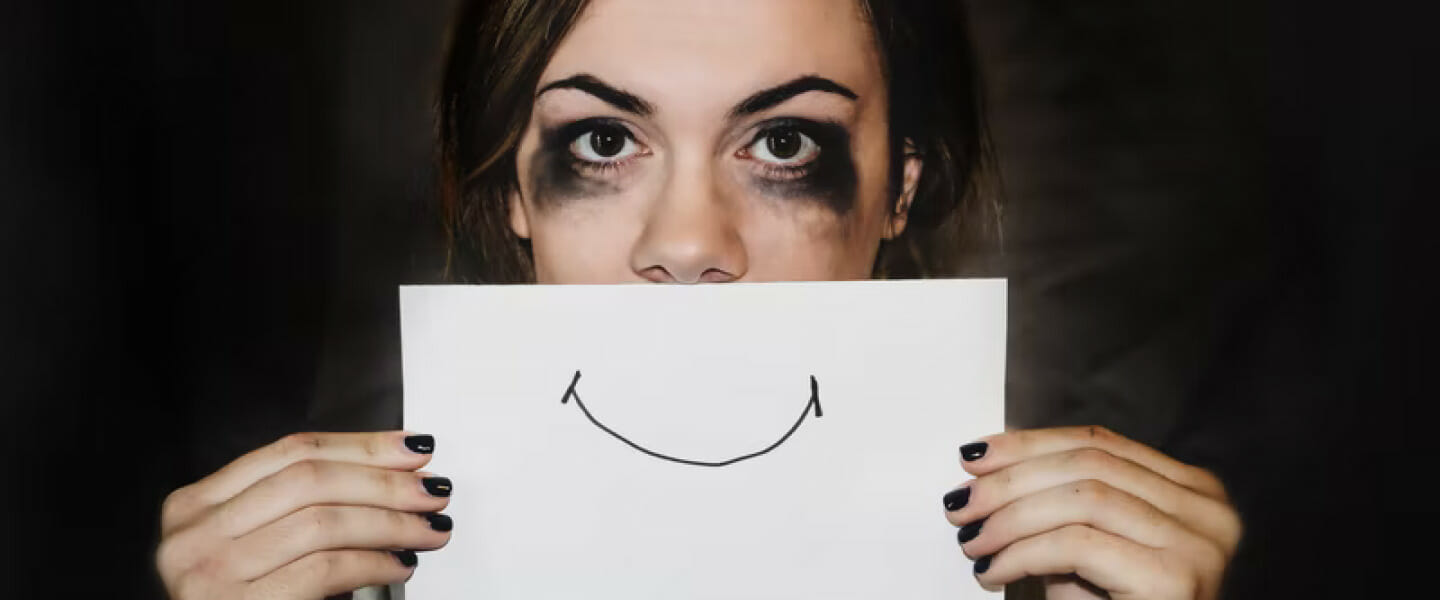What Is Social Anxiety Disorder & Social Phobia?
Let’s start by talking about what social anxiety disorder (also sometimes called social phobia) actually is and what it looks, and feels like, from the clinical perspective.
People with social anxiety disorder report that they feel intense anxiety, sometimes at the level of a panic attack, when faced with a social situation. This anxiety will often be underpinned by a belief that the individual’s ability to perform or function in the social situation will be scrutinised, criticised or otherwise viewed negatively by other people in the situation. They often expect to feel humiliated, shamed or ridiculed in social situations.
To deal with their anxiety or just get through the social situation, the individual will adopt a number of behavioural strategies, such as avoiding eye contact, not speaking in public or behaving in other ways to tolerate their distress. Even when they manage to get through the situation, they may feel like it was a “near miss” or that they just managed to get through. Often the will avoid social situations entirely.
The list here shows the different diagnostic criteria used by the diagnostic and statistical manual V (DSM-V) to diagnose social anxiety disorder.

A Cognitive Model of Social Anxiety Disorder/Social Phobia
Cognitive Behavioural Therapy is a type of psychotherapy which aims to resolve problems by identifying and changing unhelpful patterns of thinking and behaviour.
This is an image of a cognitive model of social anxiety disorder originally developed by Clark and Wells in 1995. A “model” is simply a map of what we believe to be going on when social anxiety is happening and gives us a breakdown of which parts can be treated to reduce the social anxiety.
The diagnostic and statistical manual version 5 (DSM-5) defines social anxiety disorder like this:
- A persistent fear of one or more social or performance situations in which the person is exposed to unfamiliar people or to possible scrutiny by others. The individual fears that he or she will act in a way (or show anxiety symptoms) that will be embarrassing and humiliating.
- Exposure to the feared situation almost invariably provokes anxiety, which may take the form of a situationally bound or situationally pre-disposed panic attack.
- The person recognizes that this fear is unreasonable or excessive.
- The feared situations are avoided or else are endured with intense anxiety and distress.
- The avoidance, anxious anticipation, or distress in the feared social or performance situation(s) interferes significantly with the person’s normal routine, occupational (academic) functioning, or social activities or relationships, or there is marked distress about having the phobia.
- The fear, anxiety, or avoidance is persistent, typically lasting 6 or more months.
- The fear or avoidance is not due to direct physiological effects of a substance (e.g., drugs, medications) or a general medical condition not better accounted for by another mental disorder…
Mental Health Difficulties & Social Anxiety in Liverpool city centre.
If you are suffering from social anxiety and want to improve your mental wellbeing.
This can be done in a number of ways we would advise 1on1 counselling as well as a support group. Both can help you through talking, peer support, improving confidence, managing the stress and worry of meeting different people and groups. For others dealing with panic attacks, addictive behaviours (alcohol & drugs), abusive relationships and trauma relating from personal experience we would suggest you contact us to see if CBT, ACT and EMDR could help support you.
CBT Services For Specific Topics in Liverpool


CBT For Depression
More and more, depression is beginning to be understood in a much broader sense than simply being a disorder of the brain and more of a condition that involves a combination of biological, psychological, social and cultural factors.


CBT For Anxiety
We all experience a degree of anxiety or worry at some point in our lives – It’s part of being human. But what about those times when the anxiety seems to never leave us? Or when we just can’t seem to put the worry out of our head?


CBT For Social Anxiety
After depression and generalised anxiety, social anxiety disorder is the 3rd most common mental health disorder. However, due to the very nature of the problem, treatment for social anxiety disorder is not always sought.


CBT For Anger Management
Anger, like sadness, fear and disgust is an emotion and is hardwired into each of us through many, many years of evolution and, believe it or not, can serve a positive purpose.


CBT For PTSD
Post-Traumatic stress disorder is a clinical term for a specific set of symptoms which can develop following a traumatic life event. CBT has a well-developed body of evidence to support its effectiveness in treating PTSD.


CBT For Panic Disorders
When Panic attacks become a frequent event in our lives and they lead to us waiting for them to happen or having a negative impact on how we live our lives and our mental health, then we may be experiencing Panic Disorder.
We can also help with:


CBT for Social Anxiety in Liverpool
Therapy for Social Anxiety Liverpool: After depression and generalised anxiety, social anxiety disorder is the 3rd most common mental health disorder. However, due to the very nature of the problem, treatment for social anxiety disorder is not always sought.
The effects can be severe. People with social anxiety disorder can experience difficulties in relationships, friendships, career and health and are at an increased risk of other mental health problems such as depression.
This article takes a deep look at social anxiety disorder (sometimes also called social phobia) and at how Cognitive Behavioural Therapy (CBT) can be used as an effective social anxiety disorder treatment.



Online CBT Therapists
We offer professional online therapy via an appointment-based system to deal with a number of mental health issues and negative patterns. Our cognitive behavioural therapists are here to help you through your mental health journey. Once booked in we will set up a secure video link.
With one off or regular online therapy sessions a person can engage with their current problems and deal with their negative thoughts or difficulties with life experiences.
Feel free to contact us and a professional CBT therapist will get in contact with you to book an appointment.
Frequently Asked Questions
Social Anxiety Disorder & Social Phobia
Let’s start by talking about what social anxiety disorder (also sometimes called social phobia) actually is and what it looks, and feels like, from the clinical perspective.
People with social anxiety disorder report that they feel intense anxiety, sometimes at the level of a panic attack, when faced with a social situation. This anxiety will often be underpinned by a belief that the individual’s ability to perform or function in the social situation will be scrutinised, criticised or otherwise viewed negatively by other people in the situation. They often expect to feel humiliated, shamed or ridiculed in social situations.
To deal with their anxiety or just get through the social situation, the individual will adopt a number of behavioural strategies, such as avoiding eye contact, not speaking in public or behaving in other ways to tolerate their distress. Even when they manage to get through the situation, they may feel like it was a “near miss” or that they just managed to get through. Often the will avoid social situations entirely.
The list here shows the different diagnostic criteria used by the diagnostic and statistical manual V (DSM-V) to diagnose social anxiety disorder.
The diagnostic and statistical manual version 5 (DSM-5) defines social anxiety disorder like this:
- A persistent fear of one or more social or performance situations in which the person is exposed to unfamiliar people or to possible scrutiny by others. The individual fears that he or she will act in a way (or show anxiety symptoms) that will be embarrassing and humiliating.
- Exposure to the feared situation almost invariably provokes anxiety, which may take the form of a situationally bound or situationally pre-disposed panic attack.
- The person recognizes that this fear is unreasonable or excessive.
- The feared situations are avoided or else are endured with intense anxiety and distress.
- The avoidance, anxious anticipation, or distress in the feared social or performance situation(s) interferes significantly with the person’s normal routine, occupational (academic) functioning, or social activities or relationships, or there is marked distress about having the phobia.
- The fear, anxiety, or avoidance is persistent, typically lasting 6 or more months.
G. The fear or avoidance is not due to direct physiological effects of a substance (e.g., drugs, medications) or a general medical condition not better accounted for by another mental disorder…
A Cognitive Model of Social Anxiety Disorder/Social Phobia
This is an image of a cognitive model of social anxiety disorder originally developed by Clark and Wells in 1995. A “model” is simply a map of what we believe to be going on when social anxiety is happening and gives us a breakdown of which parts can be treated to reduce the social anxiety.
CBT Treatment for Social Anxiety & Social Phobia
First of all, we want to really test out how well the model above fits with your experience of social anxiety disorder. At this stage, your CBT therapist will spend a lot of time sketching out the above social anxiety model with you, but will enter in all of your own experiences of what happens during a typical episode of your social anxiety. To help with this, we will typically ask you to keep a Social Anxiety Diary to record what actually happens when you feel socially anxious.
We will want to know the trigger situation, the automatic negative thought that popped into your head at the time the episode occurred, what you thought that you looked like in the social situation, what emotions you felt and what you did to deal with the situation.
Then we take all of this information and compile a model like the one above, but with your own information. We call this personalised model an idiosyncratic formulation. The formulation is our snapshot of just how you do your social anxiety.
The use of the diary as described above is an important element of treatment and is something that your therapist will ask you to continue using throughout treatment. There are a number of different types of unhelpful thoughts and thinking processes that contribute to social anxiety disorder – using the diary regularly will help you to identify and challenge this unhelpful thinking.Broadening the bandwidth
As we saw in the model earlier, when we find ourselves in a situation in which our social anxiety is activated, our behaviours and focus of attention change. We typically find that we become much more self-focused – so much so, that we notice every little change in our movements, our speech and our body. And, as our model suggests, noticing these small changes through this enhanced self-focus leads us to become more anxious, leading to more self-focus – the problem gets worse.
Likewise, because we don’t want people to notice how anxious we feel, we also use lots of safety behaviours to get through the situation. Again these behaviours (e.g., avoiding eye contact, saying little, holding onto something to keep our hands still) also keep the problem going. This stage in the treatment is all about understanding the role that self-focused attention and safety behaviours play in the maintenance of our social anxiety symptoms.
Firstly, your therapist will talk you through the role that attention and safety behaviours play in the problem maintenance, just like we have done here. Then they will create two situations for you to experiment with what happens when you both use your safety behaviours and self-focus and then when you drop them.
So for instance, we may agree on you having two conversations with one of my colleagues. In the first conversation, you would use every one of your safety behaviours, really use them. You would also deliberately focus upon yourself – How you’re coming across, how anxious you feel, etc. We then take a rating and have a discussion about how anxious you felt, how anxious you think you looked and any other factors relevant to your particular formulation.
In the second role play we would drop all of these safety behaviours. Maintaining appropriate eye contact, keeping hands relaxed and speaking less quickly for example. You would also be aiming to shift self-focus by focusing more on what the other person is saying, doing and wearing. And again, just like in the first role play, we would take a rating on how anxious you felt, how anxious you think you looked etc.
People tend to find that they feel more anxious in the first role play, whilst using self-focused attention and their safety behaviours, than they do in the second. They realise that the self-focus and behaviours actually keep the problem going and are unhelpful for them in their social anxiety. The client is then encouraged, over the following week, to experiment with dropping and using their safety behaviours in any social situations that they come across over the next week and see the effects that this has upon their social anxiety.
So, we talked earlier about how we create an inaccurate internal image of how we think we look – what the model calls, “processing of self as a social object.” How do we challenge this?
What we need to do is create an opportunity for you to compare the image of you that you have in your mind and how you actually look. Using Video feedback is fantastic way to do this.
This is what we do…
- Create a firm picture of how you think you look. For instance, we might use a “redness” colour chart to predict how much you think you blush. We will also get a firm idea of how much you believe you will shake, your voice wobble or get hot and sweaty. It’s important for us to as closely define each of these areas as possible.
- Create a trigger situation for your social anxiety. For instance we might get you to give a presentation in front of a group of people.
- Record the situation using a video recorder.
- Watch the video and compare what you predicted you would look like in a social anxiety situation with what you actually did look like.
- Reflect – Was your blushing as noticeable as you though it would be? How much did your hands really shake? What did you learn from all of this? What does this mean for the future?
People tend to find that how they expect to see themselves doesn’t match what they actually look like in the social situation. In fact, they’re often shocked to find out just how different they actually look compared to how they think they look. This leads to a significant reduction in anxiety for them.
trying to hold my hands still, avoiding eye contact, avoidance, speaking quickly. Pre and post event processing.
What happened?: I spoke to 5 people over the week. At first I found it difficult to speak spontaneously but this passed quickly once I had been speaking for a while. I found that I was able to hold a reasonable conversation and make a point without obsessing over saying the “right” thing. The words seemed to come out a little easier too.
What does this mean?: I can probably stop trying so hard! The words will come out anyway and thinking about saying the right thing stops the flow – it’s counterproductive. Re-rate your belief in the initial thought: 50% Re-rate your belief in the alternative thought: 80%
A key theme in social anxiety disorder and social phobia is the idea that other people create some degree of social threat – If we do something wrong, then we will be ridiculed, shamed, rejected or criticised by others, this may have even happened in the past and be contributing to these feelings now. However, whilst these events may have occurred in the past, this doesn’t necessarily mean that they are going to happen today. We are “hard-wired” with a tendency to over-estimate threat, to expect to find threat more often than we will actually find it. From the perspective of evolution this makes sense. Our ancestors that paid more attention to potential threat were generally more likely to survive than ones who didn’t.
This is where bandwidth experiments come into play. The idea of a bandwidth experiment is to reduce our tendency to over-estimate social threat, by broadening the range (bandwidth) of socially acceptable behaviours. Here is an example:
Kevin and the therapist agreed to engage in a bandwidth experiment to challenge his belief that he would be ridiculed for making a mistake. They agreed to go to the local supermarket and fill up a basket with small, unbreakable, goods such as toilet rolls and a few tin cans. Kevin then found a place in the supermarket where he could observe the therapist “model” the experiment.
The therapist walked with the basket of goods down a fairly busy aisle. He then pretended to fall to the floor, sending contents of the basket spinning down the aisles. What do you think Kevin got to observe?
He saw that people came quickly to his aid and helped him to his feet and gathered his groceries before everyone continued to go about their business. Kevin and the therapist discussed their findings. Kevin was unsure whether people would react in the same way to him, so they agreed to find out.
Kevin filled his basket of groceries and repeated the experiment after a few nervous false starts. What happened?
Exactly the same thing as happened previously, people came to his aid, showed concern that he was OK and helped to gather his groceries, and then went about their business.
The therapist and Kevin again reflected upon the experience. What had Kevin learned? “No one’s really bothered about the fact that I fell – they seemed to be more interested in making sure I was OK.” What does this mean for the future? “I probably can be a bit less concerned about making mistakes in front of people, in some situations at least.”
Take The Next Steps…
Therapy for Social Anxiety Liverpool: So there we have a basic overview of what to expect from CBT treatment for social anxiety disorder. It’s not easy, if it was we wouldn’t have a problem. But we do have a plan of treatment that has been shown to work and is recommended as a first line treatment for social anxiety disorder.
So, now you know what to expect from the treatment, you can decide when to take the next steps, when you’re ready.
If you want to get help from us then please feel free to contact us.
Access CBT Clinic - Mental Health Professionals
Access CBT is an organisation based in Liverpool but helps people all over the world with online therapy and OCD therapist resources. We work with people with all types of physical health problems and mental health difficulties. We offer professional strategies and services to improve mental well-being for short term goals and long term support.
We have expertise in CBT but also many other disciplines such as EMDR and ACT.
Feel free to contact us today to talk about appointments & sessions
Other Therapies in Liverpool


EMDR
EMDR (Eye Movement Desensitisation and Reprocessing) in Liverpool, is a specialist type of psychotherapy that has been shown in clinical trials to be an effective treatment for Post-traumatic Stress Disorder and other trauma-related life problems.


ACT
Acceptance and Commitment Therapy (ACT) in Liverpool- Acceptance and commitment therapy (ACT) is a “Third Wave” form of CBT and is the perfect alternative for people who have tried more traditional CBT (perhaps through an IAPT service) and have not achieved the desired results in their life.

